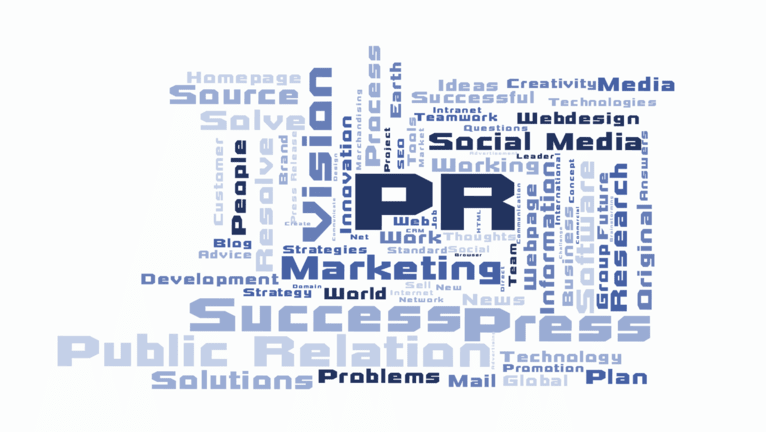What is PR Marketing?
You probably know a thing or two about PR (Public Relations) means, but what is PR marketing?
PR marketing (public relations marketing) combines traditional public relations with marketing techniques to promote a product, service, or brand. It’s important to know that it aims to build and maintain a positive image for the company, increase brand awareness, and generate interest in its offerings.

Contents
PR Marketing Importance
PR marketing is vital for companies of all sizes and industries because it helps to create a positive brand image, increase visibility, establish trust and credibility, manage crises, and support business goals.
Public relations - PR marketing is essential for several reasons, including:
- Increasing brand awareness
By using PR marketing tactics, companies can increase their visibility and reach a wider audience. This helps to increase brand recognition and awareness, leading to increased sales and revenue.
- Establishing credibility and trust
PR marketing can help companies establish credibility and trust with their target audience. Brands can achieve both credibility and trust by leveraging third-party endorsements, such as media coverage and influencer partnerships.
- Building and maintaining a positive brand image
A positive brand image is essential for a company's success. PR marketing helps to build and maintain a positive image by managing how the public perceives the company and its offerings.
- Managing crisis situations
Public relations PR marketing can be invaluable in managing crisis situations, such as product recalls or negative publicity. By having a proactive crisis communication plan, companies can minimize damage to their brand and reputation by having a bold crisis communication plan.
- Supporting business goals (marketing efforts)
PR marketing can support a company's overall business goals, such as increasing sales or launching a new product. By leveraging various tactics, PR marketing can help companies achieve their goals and drive success.
What makes a good PR marketing strategy?
A good PR marketing strategy helps a company achieve its goals by effectively promoting its products or services, managing its reputation, and establishing beneficial relationships with stakeholders. Here are some key elements that make a good PR marketing strategy:
- Set clear Objectives
Start your strategy with clear objectives that are aligned with the company's overall business goals. These objectives should be specific, measurable, and time-bound, guiding the PR plan's development.
- Identify your target audience
A good PR marketing strategy identifies the target audience and tailors the messaging and tactics to reach them effectively. This requires a deep understanding of the target audience's demographics, interests, and preferences.
- Focus on creative tactics
A good PR marketing strategy includes creative and innovative tactics that capture the target audience's attention and differentiate the company from competitors. This may include stunts, guerilla marketing, or other creative approaches.
- Create compelling Messages
A good PR marketing strategy includes compelling messaging that resonates with the target audience and effectively communicates the company's value proposition. The messaging should be consistent across all channels and tactics.
- Multi-Channel Approach
In order to reach the target audience, brands must utilize multiple channels and tactics, including media relations, social media, events, influencer marketing, and more. This approach ensures that the message reaches the target audience through various touchpoints.
- Crisis Management Plan
A crisis management plan outlines how the company will respond to negative publicity or other crises that may impact the company's reputation. The plan should be proactive and include contingencies for various scenarios.
- Measurement and Evaluation
Measuring the campaign's success and evaluating the ROI enables the company to adjust the strategy as needed and optimize future campaigns.
PR Marketing activities examples
Some examples of PR marketing activities include issuing press releases, organizing product launches, creating social media campaigns, partnering with influencers, and conducting media interviews. The ultimate goal of PR marketing is to enhance the reputation of the company and create a strong, loyal customer base.
PR marketing involves activities such as media relations, event planning, content creation, social media management, and influencer marketing. By leveraging these activities, a company can create a cohesive message and brand image, reach a wider audience, and establish relationships with key stakeholders.
- Public relations campaigns
Public relations campaigns are coordinated efforts to promote a company or product through various PR tactics, such as media relations, social media, events, and influencer marketing. These campaigns aim to create a positive image for the company and generate interest in its offerings.
- Industry events
Industry events, such as trade shows and conferences, provide opportunities for companies to showcase their products and services, network with other professionals in their industry, and generate leads. PR teams often play a key role in planning and promoting these events.
Business events, such as product launches and company anniversaries, provide opportunities for PR teams to generate positive news coverage and raise brand awareness.
- Public relations tools
Public relations tools include various tactics and strategies used by PR teams to promote a company or product. These may include media relations, social media, events, and influencer marketing.
- PR teams
PR teams manage a company's reputation and promote its products and services through various PR tactics. They work to establish and maintain beneficial relationships with the target market, media channels, and other stakeholders. These relationships promote the company's products and services and enhance its reputation.
Public relations teams are responsible for managing a company's reputation and communications strategy. They work to create positive public sentiment, manage crises, and promote the company's products and services.
- Target market
A target market is a specific group of consumers that a company is trying to reach with its products or services. PR campaigns often target specific demographics or interest groups within the broader target market.
- Types of public relations
There are several types of public relations, including media relations, community relations, government relations, crisis communication, and employee relations. Each type of PR focuses on a different aspect of the company's reputation and communications strategy.
- Managing public
Managing the public perception of a company is a key role of PR teams. This includes monitoring social media and other media channels for mentions of the company, responding to negative feedback, and working to create positive public sentiment.
- Media channels
Media channels like newspapers, TV, and social media are important for PR campaigns. PR teams work to generate positive news stories and leverage media coverage to raise brand awareness.
- Prospective customers
PR campaigns often target prospective customers to generate interest in the company's products and services and drive sales.
- Press kit
A press kit is a collection of promotional materials that a company provides to the media to generate interest in its products or services. The kit may include product samples, photos, press releases, and other materials.
- Brand management
Brand management is the process of creating and maintaining a positive image and reputation for a company or product. PR plays a key role in brand management by promoting positive news stories and responding to negative feedback.
- Supply chain
The supply chain refers to the network of companies and individuals involved in producing and delivering a product or service. PR can play a role in managing the reputation of the companies within the supply chain.

- Social listening
Social listening involves monitoring social media channels for company or product mentions. PR teams can use social listening to respond to customer feedback and identify trends in public sentiment.
- Advertising campaign
Advertising campaigns are coordinated efforts to promote a product or service through paid advertising channels, such as TV, radio, and online ads.